How to Prepare for a High-Altitude Trek in Dolpo: A Complete Guide
Planning a high-altitude trek through Dolpo? You're in for an unforgettable adventure. This far-flung corner of Nepal serves up breathtaking landscapes, a unique cultural experience, and some serious physical challenges. Yet, let the beauty of the Dolpo region not fool you, as it happens to be ruggedly remote, and therefore, you need serious preparation.
In this guide, we will walk you through everything you need to do while getting ready for the high-altitude trek in Dolpo, from acclimatization tips to the essential gear needed to get fit for the journey ahead. Whether you are an experienced hiker or taking on your first major trek, these insights will ensure that you are ready for this high-altitude adventure.
Understanding the Dolpo Region: What Makes It Special?
We must first understand what Dolpo has to offer in the high-altitude trek before really delving deep into the preparation process. Generally, it is considered that Dolpo represents one of the most remote and least explored regions of northwestern Nepal, often with an elevation above 5,000 meters—that is, 16,400 feet above sea level. The trails are rugged, demanding a good level of fitness and preparation.
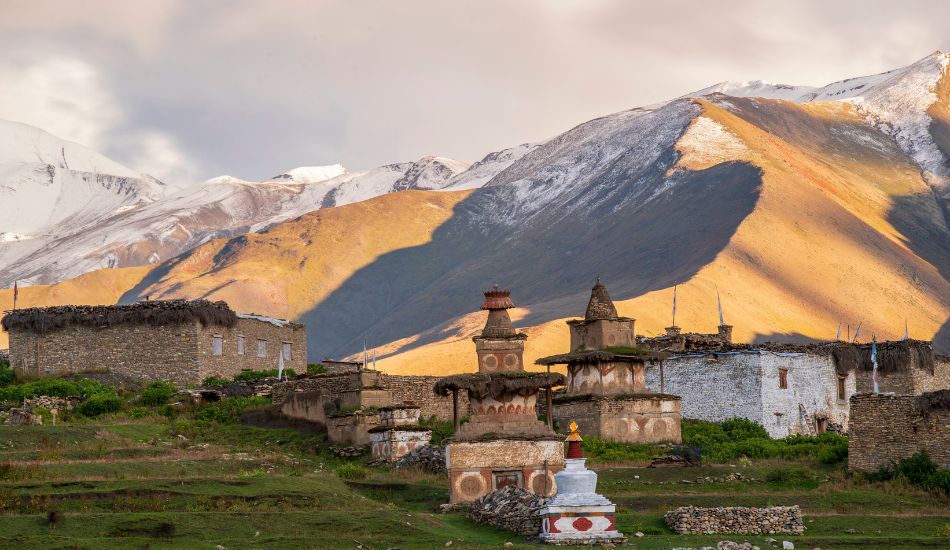
Why Trek Dolpo?
Pristine Beauty: The highlands are bare; the valleys are lush. Mesmerizing, simply put. This is a cultural immersion into a world of ancient villages, home to the traditional Tibetan Buddhist culture that has been preserved here for centuries.
Rugged Terrain: This is not exactly a Sunday afternoon stroll. Be prepared for demanding, long days of trekking through mostly high-altitude terrain. Now that I have tempted you with this adventure let me break down the step-by-step process of preparing for the Dolpo trek.
Step 1: Know the Terrain and Weather
When trekking at high altitudes in Dolpo, you face not only difficult terrain but also freakish weather conditions. The region, especially at night, experiences cold temperatures and thinner air as you go higher.
Dolpo Altitude Ranges
Lower Dolpo: 2,500–4,000 meters (8,200–13,100 feet)
Upper Dolpo: 4,000–5,500 meters (13,100–18,000 feet)
Dolpo is mostly a high-altitude desert, lying in the rain shadow of the Himalayas. While days might be bright and warm, freezing cold at night is not uncommon. Preparation against such extremes during the trekking season between May and October will be necessary.
Highly Recommended Blog, Best Seasons for Upper Dolpo Trek
Step 2: Fitness Preparation for Dolpo Treks
In fact, the fitness level required to trek at Dolpo's high altitude is not just about being fit. You will need a mix of endurance, strength, and mental stamina to keep up with the physical demands. You can read our blog "How Difficult is Upper Dolpo Trek".
Dolpo Trek Preparation Training Schedule
Start your training at least 2-3 months before the date of the trek. This is what your routine would look like:
Cardiovascular Training: Cardiovascular workouts like jogging, cycling, or swimming should be included in your endurance training program. Aim for at least 30-60 minutes of moderate cardio for a minimum of 4-5 times a week.
Hike Training: Hike locally whenever possible to simulate the environment of a trek. Include long weekend hikes with a loaded backpack (20-30 pounds). Pay close attention to elevation gain in an effort to simulate the altitude that will be experienced in Dolpo.
Strength Training: Leg strengthening exercises such as lunges, squats, and step-ups will be very beneficial.
Do not skip core and upper body workouts, as you will be carrying a heavy backpack for a few hours.
Flexibility and Balance: Yoga or stretching classes will help you balance and become flexible, reducing the risk of injury.
Mental Preparation
The trekking at high altitudes in Dolpo is both mental and physical. Long days, bad weather, and isolation all take their toll. In addition to physical fitness, mental strength is just as important. Build up patience and resilience.
Step 3: Acclimatization Tips for High-Altitude Trekking Dolpo
Acclimatization is essential for any high-altitude trek. Since many of Dolpo's trails lie above 4,000 meters, you will have to give your body some time to get used to the thinner air.
Why Acclimatization Matters
As you go higher, the air pressure drops, resulting in lesser oxygen availability. This can cause altitude sickness, from milder symptoms like headaches and nausea to serious, life-threatening conditions.
Top Acclimatization Tips
Go Slow: The golden rule is to "trek high, sleep low." That is, although you may hike to higher altitudes during the day, you descend slightly to sleep.
Avoid ascending more than 500 meters (1,640 feet) a day once you're above 3,000 meters.
Stay Hydrated: Drink plenty of water-3-4 liters a day. Dehydration exacerbates all the symptoms of altitude sickness.
Eat Carbohydrate-Rich Meals: Carbs help improve oxygen efficiency at high altitudes, so load up on energy-rich foods.
Take Rest Days: You should include rest days in your schedule. Rest days give your body an opportunity to acclimatize and recover.
Listen to Your Body: AMS can affect anyone, from first-time hikers to ultramarathoners. If symptoms such as dizziness, headaches, or nausea begin, it's time to stop, rest, and descend if necessary.
Step 4: Essential Gear to Bring Along for Dolpo Trekking
Gear can make or break an experience. So esoteric is the location where one will not get an opportunity to replace or repair stuff once out in the wilderness. Here's a checklist of the most essential trekking gear for Dolpo.
Clothing
Base Layers: Thermal tops and bottoms for warmth.
Mid-Layers: Fleece jacket or vests for insulation.
Outer Layer: Waterproof and windproof jacket and pants.
Down Jacket: Must for cold nights and high passes.
Trekking Pants: Lightweight yet strong.
Warm Hat and Gloves: Make sure they are thermally warm for freezing temperatures.
Sunglasses and Sunhat: It's boiling up there in the sun.
Footwear
Trekking Boots: Invest in quality waterproof trekking boots. Make sure they're broken in before the trip.
Gaiters: Useful for keeping dirt and snow out of your boots.
Warm Socks: Bring a few pairs of heavy and thick socks, preferably thermal ones.
Trekking Equipment
Backpack: A 50-70 liter backpack with enough room for all your stuff, snacks, and water.
Sleeping Bag: You'll be sleeping high up, so your sleeping bag must be rated for temperatures between -15°C and -20°C (5°F and -4°F).
Trekking Poles: They will help with your balance and take some pressure off your knees during those long descents.
Water Purification System: Ample drinking water is hard to find, so bring either purification tablets or a portable filter.
Headlamp: It gets dark pretty quickly in the mountains; hence, a good headlamp is required.
First Aid Kit: Items like bandages, antiseptic, blister treatments, and medications for altitude sickness will be put inside.
Other Essentials
Snacks: High-energy snacks such as nuts, protein bars, and chocolates will make you feel fuller for a longer period during those long treks.
Portable Charger or Solar Charger: Dolpo is so remote there will be very little access to electricity.
Personal Hygiene Items: Since the showers are few and far between, pack wet wipes, hand sanitizer, and biodegradable soap.
Step 5: Plan Your Dolpo Trek Itinerary
When planning your high-altitude trekking adventure in Dolpo, several factors must be considered, including your fitness level, time available, and acclimatization time required for the higher elevations.
Dolpo Trekking Routes Popular
Duration: 18-21 days
Highlights: Phoksundo Lake, ancient Bon monasteries, and the Shey Phoksundo National Park.
Duration: 25-30 days
Highlight: Remote villages, rugged passes, stunning landscapes.
Shey Gompa Trek:
Duration: 24-28 days
Highlights: Shey Gompa Monastery, Crystal Mountain, and wildlife such as blue sheep and snow leopards.
It is wise to plan your itinerary so that rest days are scheduled to allow acclimatization and always to seek advice from local guides about the safest routes and best times to trek.
Step 6: Packing for the Trek – What to Include
While we have already discussed the primary gear for trekking necessary in Dolpo, here are some extra tips on what to pack, which will make your journey easier.
How to Pack Efficiently
Wear layered clothes: Place in the luggage light layers you could put on and take off when necessary. It will save space and make using different temperatures easy.
Use Compression Sacks: These help reduce the bulk of your sleeping bag and clothes.
Keep Valuables Safe: Waterproof bags or Ziploc bags to keep electronics and documents dry.
Step 7: Hiring a Guide and Permits for Dolpo
Trekking in Dolpo requires both permits and often a guide, especially for the more remote areas.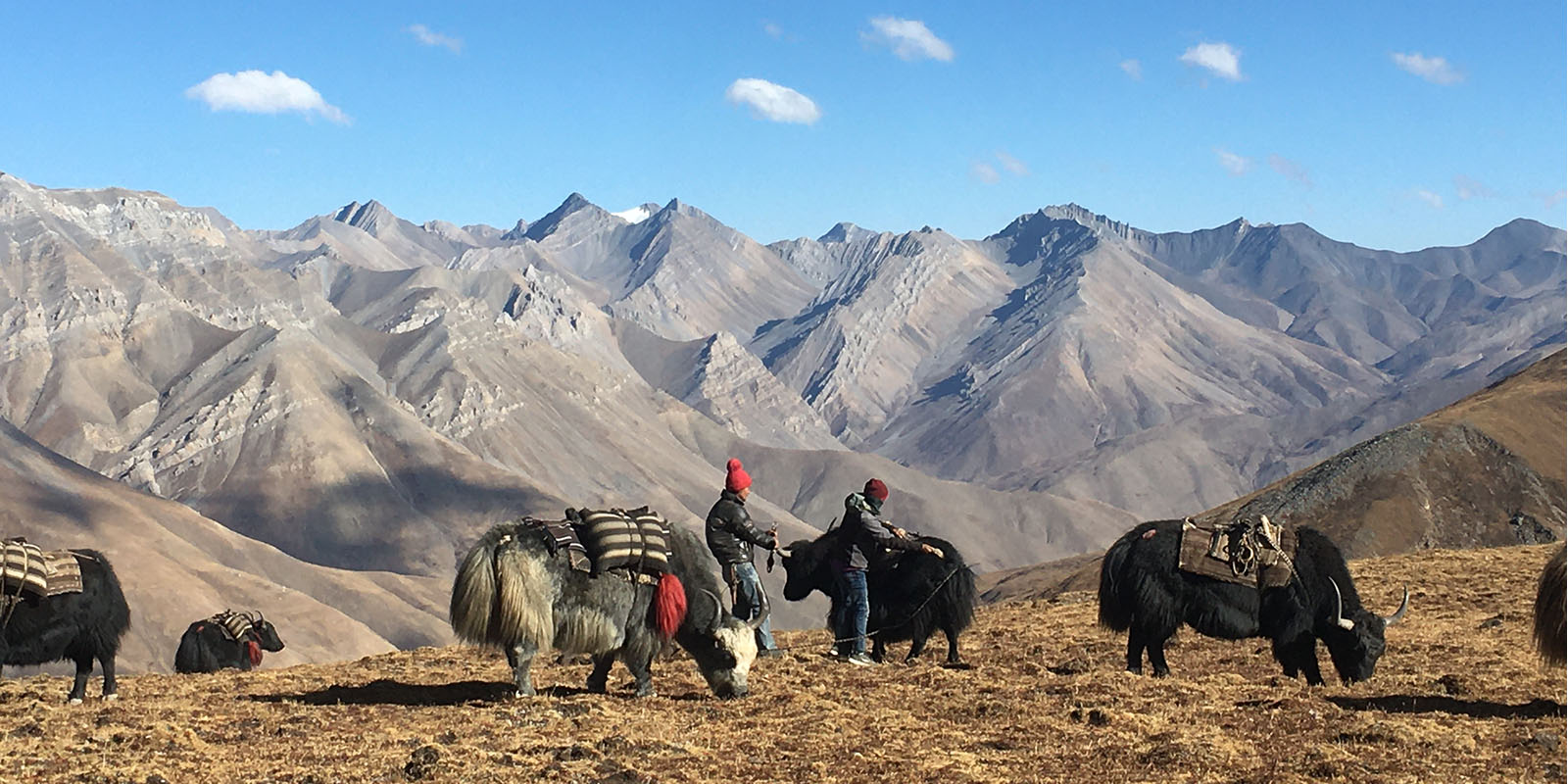
Required Permits
Restricted Area Permit (RAP): This is required for both Lower and Upper Dolpo. The cost is approximately $500 for ten days in Upper Dolpo and $10 per day thereafter.
Shey Phoksundo National Park Entry Permit: It costs approximately $30 per person.
Why Hire a Guide?
Its remoteness gives way for it not to be much trouble disappearing or finding an unexpected or unplanned situation in Dolpo. With the help of a guide, you will be able to find interesting insights into how to keep safe and support navigation through this very hard route.
Click here to know about off-the-beaten path treks in Nepal.
Conclusion
The trekking in Dolpo is once in a lifetime, but one must do the best preparation. From building your fitness to choosing the right gear and acclimatization, every step taken pre-trek will add up to the successful trip. With the right mindset and planning, you are ready to take on challenges that come along with high-altitude trekking, Dolpo, and simultaneously enjoy full beauty and serenity of this backward region.
Ready to Explore the Hidden Gems of Dolpo? Choose Dolpo Caravan as your trekking partner and embark on an unforgettable adventure! Book yours now!
FAQs
How long before my Dolpo trek should I train?
2-3 months before your trekking is considered an ideal time for the commencement of training regarding cardio, strength, and training with a loaded backpack.
What is the best time of year to trek in Dolpo?
The best time for trekking in Dolpo can be considered from May to October as it offers better weather conditions. However, on the contrary, the summer evening is tremendously cold.
Can I hike Dolpo on my own?
Yes, you can, but it is not recommended that you trek, as parts of the region are somewhat remote. Hiring a guide keeps you safe and helps you navigate difficult areas.
What are the symptoms of altitude sickness?
Some of them are headaches, dizziness, nausea, and breathing difficulties. If any of the mentioned symptoms get worse, it is always highly recommended to go further down without wasting a single minute.
How much does it cost to tour Dolpo?
Inclusions, gear, guide fees, and personal expenses include the cost of a Dolpo trek, which can range from $3,000 to $5,000, depending on your itinerary and group size.
How do I stay connected while trekking in Dolpo?
Dolpo is super remote, so there's limited access to Wi-Fi or cell service. Consider packing a satellite phone or relying on a guide for communication options.
How difficult is the Dolpo trek?
Dolpo Trek The Dolpo Trek is considered challenging because of the roadless area, rugged geography, and high-altitude crossings. Most of the trails are above 4,000 meters of altitude, with some even reaching over 5,000 meters. Acclimatization and physical fitness for every trekker become essential pre-trek requirements.

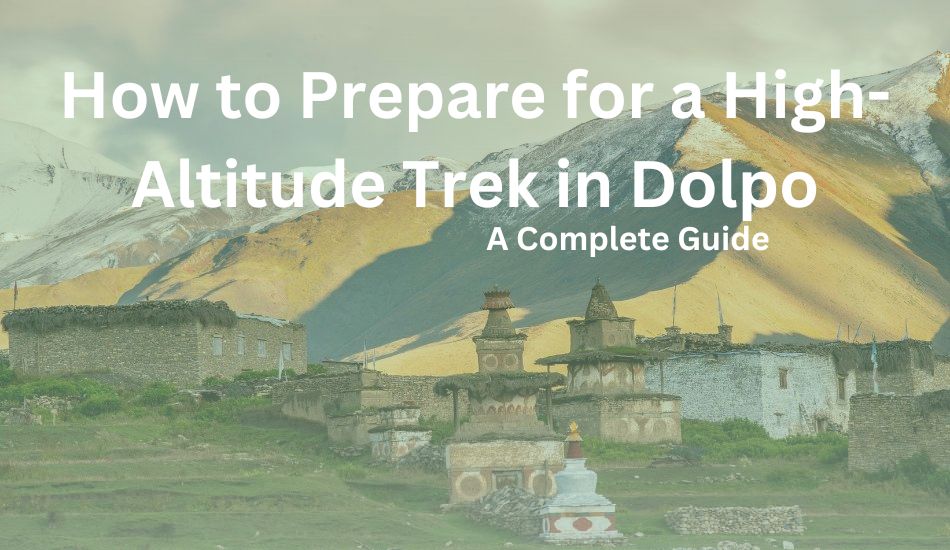
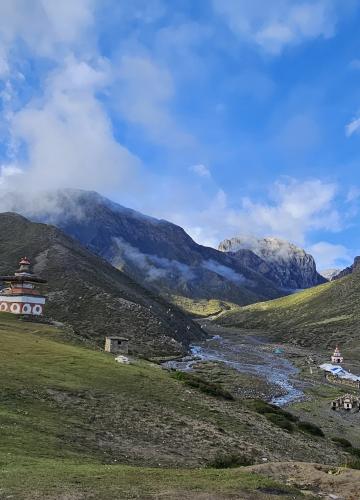
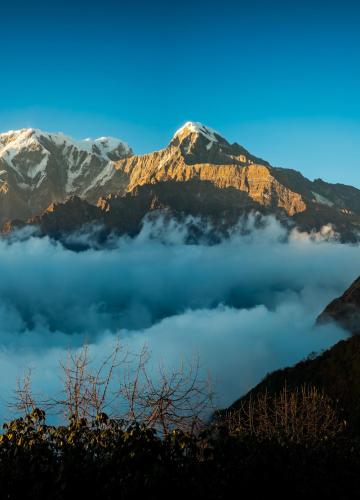
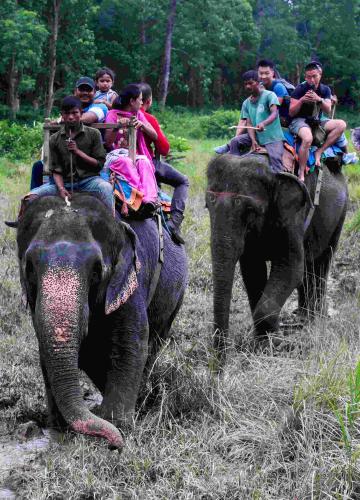
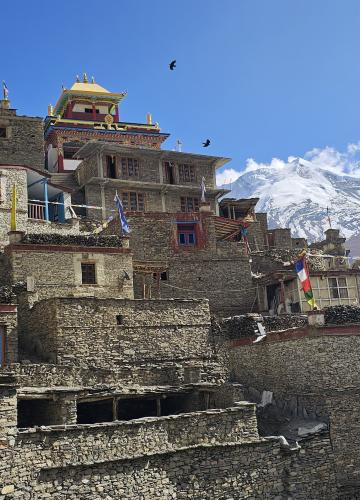
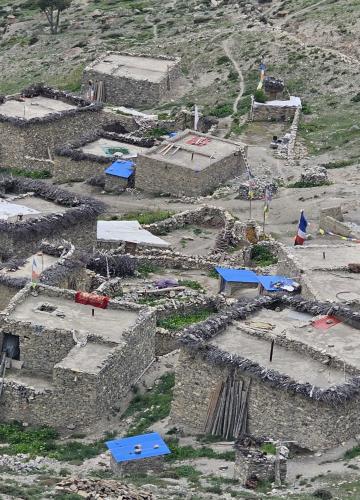
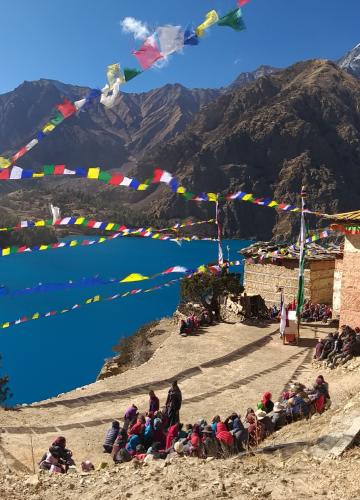

Leave Your Comment